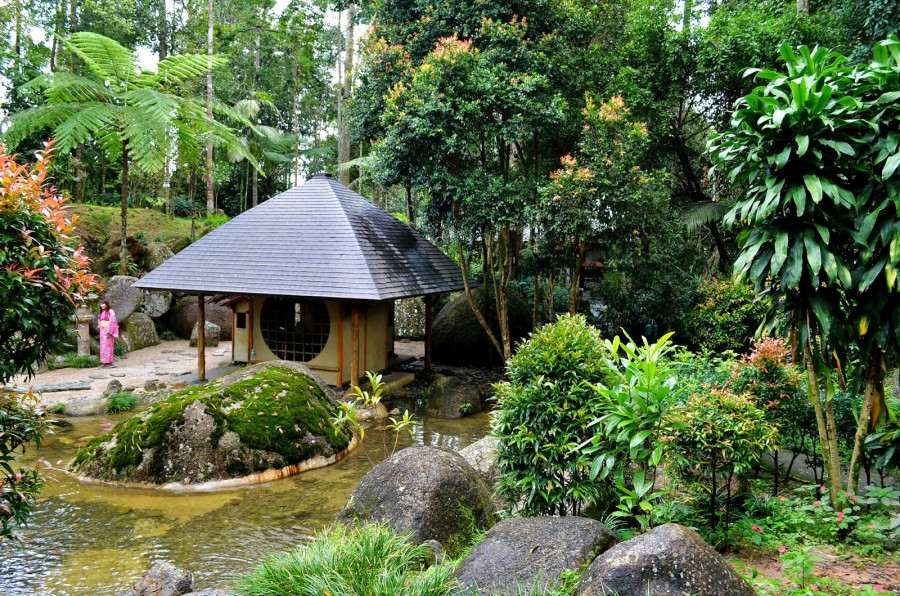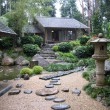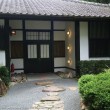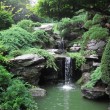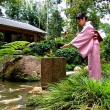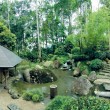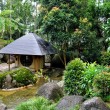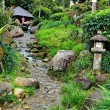By Yasmin Yahya
I will never forget the feeling of excitement when I first arrived at Japanese Village, Colmar Tropicale, Bukit Tinggi. Located 3,500 feet above sea level, the Japanese Village is the first of its kind outside Japan here in Malaysia.
The journey took about one hour from Kuala Lumpur and was definitely worth it. I was delighted to be greeted by the stunning and spectacular view of green mountains, fresh breeze and the smell of lush tropical rainforest. Truly breathtaking!
I did some research to know more about the place. The garden was designed by renowned Japanese architect, Kaio Ariizumi and built by a team of 22 skilled craftsmen directly from Japan.
A tranquil and relaxing retreat, the garden is enclosed within a natural tropical rainforest and also features some interesting attractions such as Japanese Tea House, Tatami Spa, Botanical Garden, Ryo Zan Tei Japanese Restaurant and Ume Tatami Suite. Guests can choose to participate in the Tea Ceremony where one will learn more about the Japanese culture or to rent a Kimono for a picture or two at the beautiful garden.
It reminded me of the day when my friends and I went to the Japanese Village recently (some time in May this year). Early in the morning, we had to climb our way up the hill in order to reach our final destination. I must say it was quite a tough climb for us. At the end of the steep slope, we arrived at a crossroad where it led to the Japanese Village. We were pleased to see an exact replica of Japanese Village in the garden and we all got so excited after we saw a bridge spanning across a Koi fish pond and a beautiful waterfall. The scenery brought enjoyment to us as we forgot all tiredness during our climb earlier.
At RM20 per person, we rented and got dressed up in a Kimono (Japanese traditional dress). After getting dressed, you were allowed to roam freely around the area and capture several photos of ourselves within the 30 minutes time frame. It was really a precious experience for us since we got the opportunity to wear their traditional clothes here in Malaysia.
Situated in the middle of the village is the Japanese Tea House, also known as Chashitsu by the Japanese. The Tea House overlooks a Koi fish pond, surrounded by beautiful large moss rocks, trees and flowers. Outside the Tea House, a structured stone path encircled the Japanese hut, which seems to add some additional charm to the entire landscape. The Tea House runs a tea ceremony several times a day. For RM18 per person, this is when we will be able to learn on how Japanese Tea are being prepared and served in the most traditional way. However, we did not participate in the Japanese Tea Ceremony as we thought it is a little bit pricey for us.
Further in, we found a Japanese Spa centre named as the Tatami Spa. The Spa centre is housed within a two-storey bungalow that is beautifully surrounded by lush greenery. The Tatami Spa offers a wide range of spa treatments, ranging from aromatherapy, body scrub, reflexology and even outdoor Onsen (hot spring bath). Sounds really good right?
We reached the crossroad and decided to visit the souvenir shop. We did not get to spend much in the souvenir shop as nothing managed to interest us to purchase it. However, I really love the colourful Koi fish flags which we found hanging outside of the shop. These Koi fish flags, known as Koinobori by the Japanese, are hung to celebrate the Spirits of Boys Day or Children Day in Japan. As such, Koinobori is traditionally flown by Japanese families to wish the sons a good future.
What I want to highlight here is the knowledge that we gained from our experience about the tradition of the Japanese culture. Japan is known for its unique culture and heritage, which has been preserved by the Japanese people since ancient times. The age-old Japanese traditions and customs which give a unique character to the lifestyle of the Japanese people have to be experienced to be truly appreciated.
The original Japanese gardens were inspired by Buddhist and Chinese philosophers and later evolved to have their own distinct Japanese identity. The gardens usually found in Japanese temples and shrines are inspired by the Shinto religion and the belief in an ideal state of harmony. The Japanese attempt to recreate this idealised harmony in their beautifully designed gardens that include aspects such as water, rocks, gravel, moss and miniature plants or bonsai.
One of the most famous Zen Rock Gardens (here for picture) in Japan located in Kyoto. The similar concept of the garden can be seen at the Japanese Village, Bukit Tinggi whereby all the elements of perfect Japanese gardens can be found there.
As for traditional Japanese architecture, basically it has a distinct style deeply influenced by Buddhism and Shintoism. Houses and temples made of wood, placed on stilts to raise them above the ground, and with sloping roofs made of thatch or tiles create a distinctive silhouette in traditional Japanese architecture. The use of lightweight wood and bamboo to create Fusuma (sliding doors) and straw or woven grass to create Tatami (mats) are other unique features of Japanese architectural design. People usually sat on the floor and furniture only came into widespread use after the late-nineteenth and early twentieth century (here for picture).
For the Japanese Tea Ceremony, it was for preparing and offering tea to revered guests is a formal and stylish ritual, almost like a meditative performance. The art or skill of preparing tea and all the elements of the tea ceremony have special and symbolic meaning. Deeply influenced by Zen Buddhism, the Japanese tea ceremony has evolved into a cultural ritual which means much more than the mere sampling of powdered green tea, and is a unique part of Japanese traditions.
The Japanese Kimono (the traditional Japanese costume), is a graceful full-length robe that falls from the wearer’s shoulders to the ankles. The robe is tied around the middle with a sash called the Obi. Kimonos for special occasions were made of rich fabric such as silk, satin and brocade and feature designs inspired by nature such as cherry blossoms, autumn leaves, butterflies and pine trees. Kimonos (here for picture) are now worn mostly for ceremonial occasions and events such as festivals and marriages.
Before we left, we took a nice photo in front of the beautiful scenery. Hopefully we would be back visiting Bukit Tinggi very soon again. Well, I ended my day at Bukit Tinggi with satisfaction. It was a well-worth trip, although we found everything to be a little overpriced here. Even so, we could understand the Japanese culture and traditions during our trip.
Overall, I have a lot of fun exploring the Japanese Village. Comparing to man-made buildings, I love the tranquillity and calmness of the nature promoted by the management at Japanese Village even more. It is always so relaxing and peaceful.
For people who are looking for a relaxing short day trip, why not consider making a trip to Bukit Tinggi. I believe the fresh cooling air, lush greenery and mountains view would not disappoint you. I guarantee it.
Here is the location of the Japanese Village, Colmar Tropicale, Bukit Tinggi:
Address:Â km 48, Persimpangan Bertingkat Lebuhraya Karak, Colmar Tropicale, Bukit Tinggi, 28750 Bentong, Pahang, 28750, Malaysia. ***
